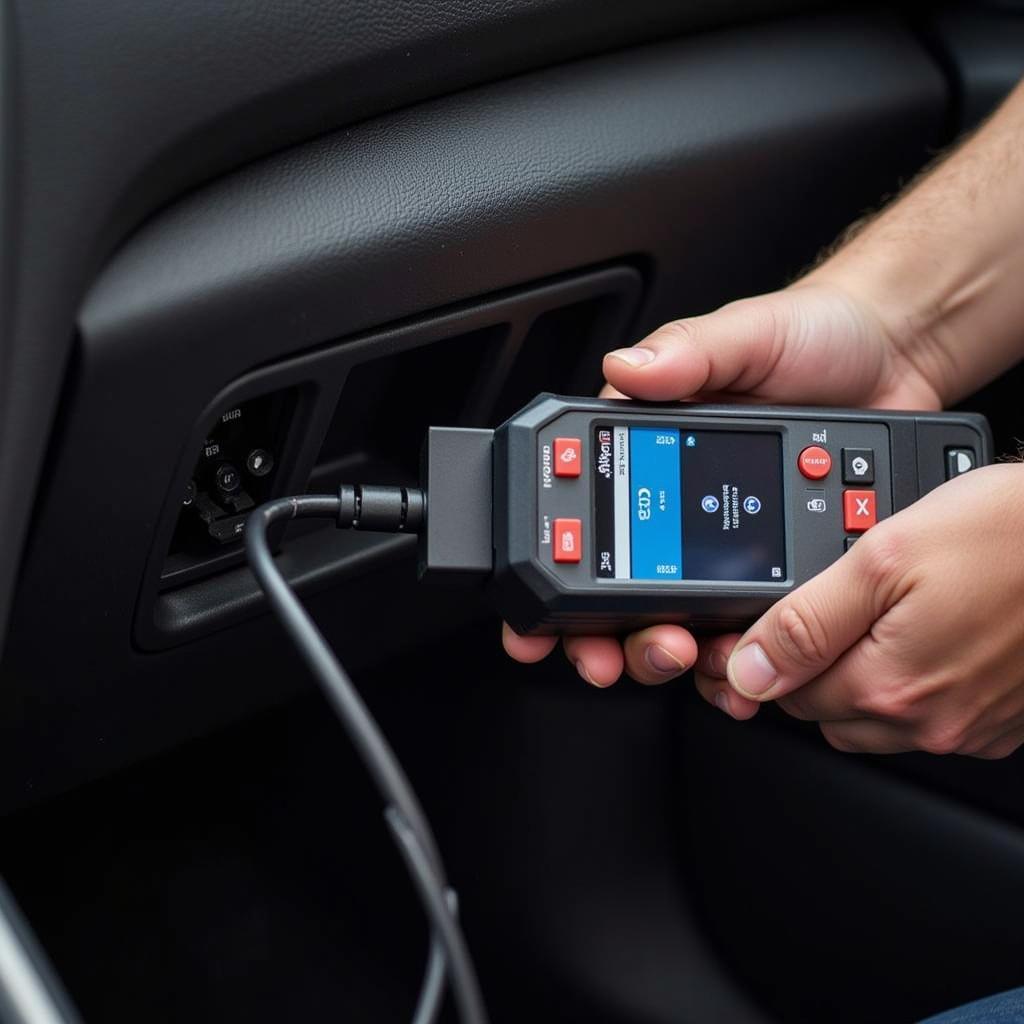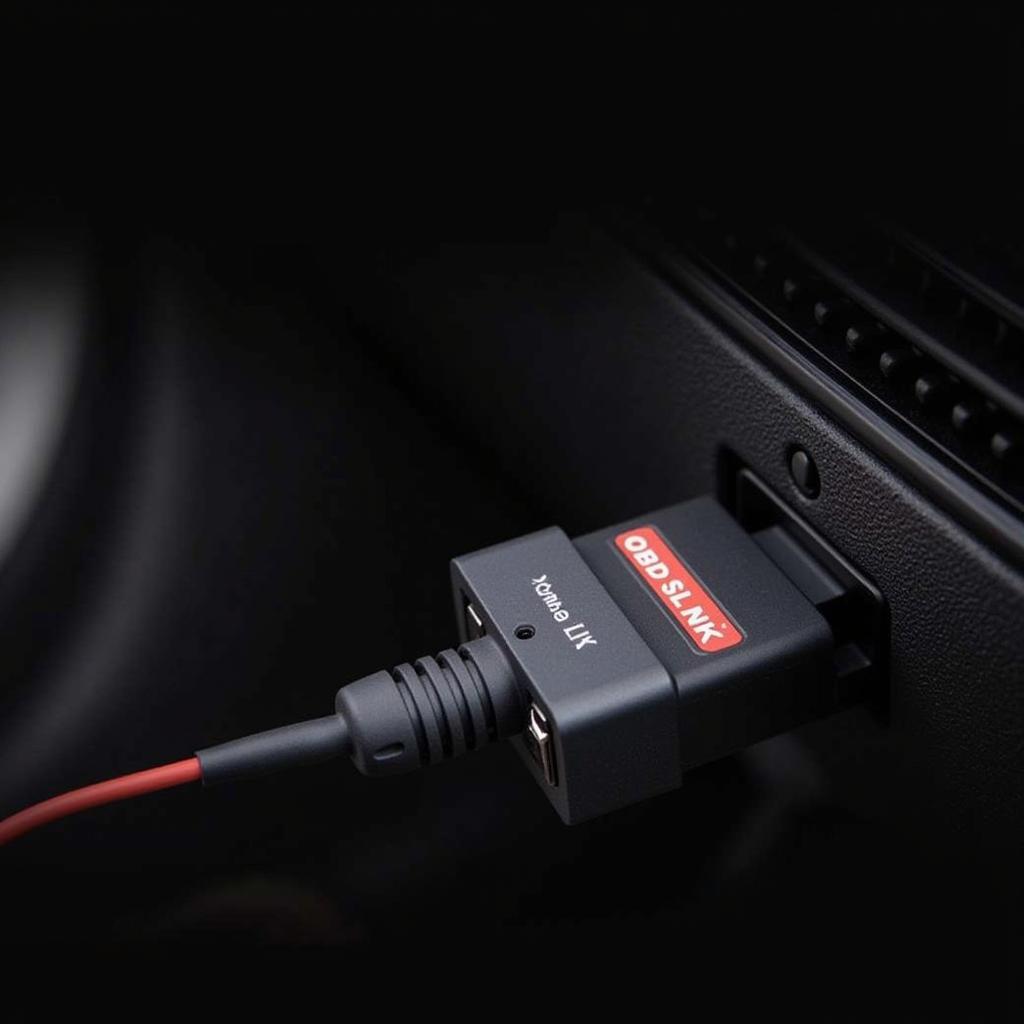Modern vehicles are heavily reliant on computers to run smoothly. When something goes wrong, your car tries to tell you by flashing a light on your dashboard. This is your check engine light, and it can mean anything from a loose gas cap to a serious engine problem. But how can you understand what it’s saying without a scan tool?
While a scan tool is the most accurate way to read engine codes, there are times when you might find yourself without one. Maybe you’re on a road trip, or perhaps you’re trying to troubleshoot the issue before heading to a mechanic. Whatever your reason, it’s helpful to know a few tricks to decipher your car’s cryptic warnings.
Deciphering the Language of Your Car: Is It Possible?
Many car owners wonder, “Can I really understand what’s wrong with my car without a special tool?” The answer is, surprisingly, yes! While a memory scan tool will give you the most comprehensive information, there are ways to get a basic understanding of the issue without one.
Methods for Reading Engine Codes Without a Scan Tool
1. The Paperclip Trick (For Older Vehicles)
This method works on many cars built before 1996. Here’s how it works:
- Locate the diagnostic port. This port is usually located under the dashboard on the driver’s side. It might have a cover labeled “OBD” or “Diagnostic.”
- Use a paperclip to jump the connector. The diagnostic port has a series of pins. You’ll need to connect two specific pins with a paperclip to read the codes. The exact pins vary depending on the make and model of your car, so be sure to consult your vehicle’s repair manual.
- Turn the ignition to the “on” position. Don’t start the engine.
- Observe the check engine light. The light will begin to flash in a specific sequence. This sequence corresponds to specific trouble codes. For example, a series of five flashes, followed by a pause, then another five flashes, indicates the code “55.”
Important Note: The paperclip trick can be risky if done incorrectly. Always double-check the correct pins for your car model and proceed with caution.
2. Checking the Dashboard Gauges
Sometimes, your car will give you clues without needing any special tricks. Pay close attention to your dashboard gauges if the check engine light comes on.
- Temperature Gauge: Is it running hotter than usual? This could indicate a problem with the cooling system.
- Oil Pressure Gauge: Is the pressure low? This could mean there’s an issue with your oil pump or a leak.
- Battery Gauge: Is the voltage fluctuating? This could signal a problem with your alternator.
While not as precise as reading codes, these indicators can give you a general idea of where the problem might lie.
3. Listen to Your Car
Your car often communicates through sounds. New or unusual noises can be early warning signs of a problem.
- Knocking or pinging sounds from the engine could indicate bad spark plugs or a problem with the timing.
- A squealing noise when you start the car could be a sign of a worn-out serpentine belt.
- Grinding noises when braking usually mean your brake pads are worn down and need to be replaced.
4. Look for Physical Signs
Sometimes, a visual inspection can reveal potential car troubles.
- Fluid Leaks: Look for any fluids pooling under your car. Identify the color and consistency of the fluid to determine the source.
- Worn-Out Belts and Hoses: Check for cracks, fraying, or looseness in your belts and hoses.
- Exhaust Smoke: Different colors of smoke coming from your exhaust can indicate different problems. For example, blue smoke often indicates burning oil.
“Even experienced mechanics use their senses when diagnosing a problem,” says John Smith, a senior automotive engineer at ScanToolUS. “Don’t underestimate the power of careful observation.”
When to Consult a Professional
While these methods can be helpful, it’s important to remember that they don’t replace the accuracy of a proper diagnostic scan. If the check engine light persists or you suspect a serious issue, it’s best to take your car to a qualified mechanic. They have the key diagnose car scanner decoding tools and expertise to pinpoint the problem and get your car back on the road safely.
FAQ
Can I use my phone to read engine codes?
Yes, there are several OBD2 scanner apps available that can read codes when paired with a Bluetooth-enabled OBD2 dongle.
What does a flashing check engine light mean?
A flashing check engine light usually indicates a more serious problem that requires immediate attention.
Is it safe to drive my car with the check engine light on?
It depends on the severity of the problem. If you notice other symptoms like strange noises or performance issues, it’s best to stop driving and have your car towed to a mechanic.
Can a loose gas cap trigger the check engine light?
Yes, a loose or damaged gas cap can cause fuel vapor leaks, triggering the check engine light.
Where can I find reliable information about my car’s engine codes?
Your vehicle’s repair manual is a great resource. You can also find information online or consult a trusted mechanic.
Conclusion
Understanding how to read engine codes without a scan tool can be incredibly useful in a pinch. By paying attention to your car’s signals and using the methods described above, you can gain valuable insights into potential problems. However, remember that these methods are not foolproof and should not replace a proper diagnosis from a qualified mechanic. When in doubt, always err on the side of caution and seek professional help. You can contact us at ScanToolUS, our phone number is +1 (641) 206-8880 and our office is located at 1615 S Laramie Ave, Cicero, IL 60804, USA. We are here to help!


